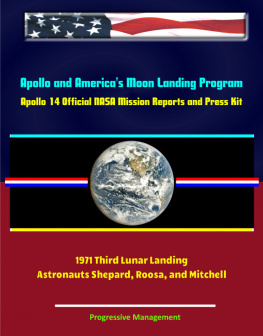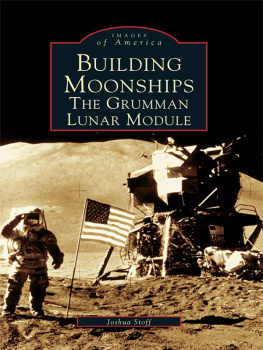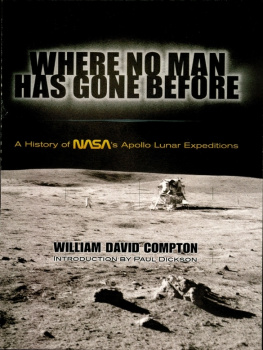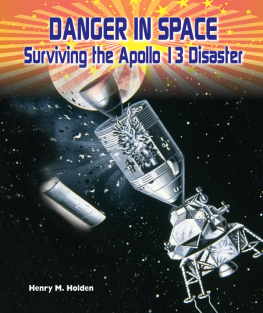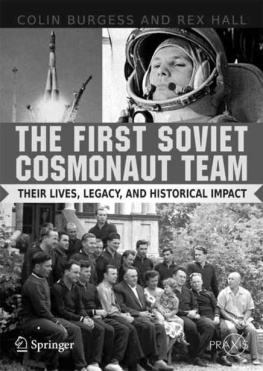Appendix A
Manned Spacecraft Center Site Selection Procedure
The procedure for selecting a site for a manned space flight laboratory, one of four major facilities required for the manned lunar landing mission set by the President, was as follows:
I. The selection of the site would be made by the NASA Administrator in conjunction with the Deputy Administrator.
II. As the first step in collecting information to assist the Administrator in the selection, on 7 July 1961 the Associate Administrator instructed the Director, Office of Space Flight Programs, to establish preliminary site criteria and to propose membership for a site survey team. The team, appointed on 7 August 1961, consisted of John F. Parsons, Chairman, Associate Director, Ames Research Center; N. Phillip Miller, Chief, Facilities Engineering Division, Goddard Space Flight Center; Wesley L. Hjornevik, Assistant Director for Administration, and I. Edward Campagna, Construction Engineer, Space Task Group. When Hjornevik was suddenly taken ill on 12 August 1961, he was replaced by Martin A. Byrnes, Project Management Assistant, Space Task Group.
III. The site survey team met on 11 August with the Director, Office of Space Flight Programs; the Associate Director, Space Task Group; and the Assistant Director for Manned Space Flight, Office of Space Flight Programs. During this meeting, tentative site requirements were developed.
Abstracted from James E. Webb, NASA Administrator, Memorandum for the President, 14 September 1961, and attachment.
IV. The site requirements were formulated in detail by the site survey team. At a meeting with the Deputy Administrator, Director of Space Flight Programs, Director of the Office of Programs, and the Assistant Director for Facilities of the Office of Programs, the Administrator approved the following criteria:
Essential Criteria
- Transportation: Capability to transport by barge large, cumbersome space vehicles (9 to 12 meters in diameter) to and from water shipping. Preferably the site should have its own or have access to suitable docking facilities. Time required in transport would be considered.
Availability of a first-class all-weather commercial jet service airport and a Department of Defense air base installation in the general area capable of handling high-performance military aircraft.
- Communications: Reasonable proximity to main routes of the long-line telephone system.
- Local Industrial Support and Labor supply: An existing, well-established industrial complex, including machine and fabrication shops, to support a research and development activity of high scientific and technical content and to fabricate pilot models of large spacecraft.
A reliable supply of construction contractors and building trades craftsmen to permit rapid construction of facilities without premium labor costs.
- Community Facilities: Close proximity to a culturally attractive community to permit the recruitment and retention of a staff with a high percentage of professional scientific personnel.
Close proximity to an institution of higher education, with emphasis on one specializing in the basic sciences and in space-related graduate and postgraduate education and research.
- Electrical Power: Strong local utility system capable of developing up to 80 000 KVA of reliable power.
- Water: Readily available, good-quality water system capable of supplying more than a million liters per day of potable water and the same amount of industrial water.
- Area: 4 square kilometers with an available adjacent area for further development. Suitable areas in the general location for low hazard and nuisance subsidiary installations requiring some isolation.
- Climate: Mild, permitting year-round, ice-free water transportation and out-of-door work for most of the year to facilitate operations, reduce facility costs, and speed construction.
Desirable Criteria
- Impact on Area: Compatibility of proposed laboratory with existing regional planning and ability of community facilities to absorb the increased population and to provide the related industrial and transport support required.
- Site Development Costs: Consideration of costs for site development required for proposed laboratory.
- Operating Costs: Consideration of costs for normal operations, including utility rates, construction costs, wage scales, etc.
- Interim Facilities: Availability of reasonably adequate facilities for the temporary use of up to 1500 persons in the same general area as the permanent site.
V. The site survey team was instructed to survey possible sites using all available information and using the approved criteria to decide which should be visited by the team, visiting these sites and such others as might be directed by the Administrator, and preparing a report, including a listing of the advantages and disadvantages of each site considered.
VI. A team review of climatological data furnished by the United States Weather Bureau and information on water-borne commerce in the United States provided by the Corps of Engineers, Department of the Army, resulted in the following preliminary list of prospective areas that met the essential criteria of water transportation and climate:
Norfolk, Virginia; Charleston, South Carolina; Savannah, Georgia; Jacksonville, Miami, and Tampa, Florida; Mobile, Alabama; New Orleans and Baton Rouge, Louisiana; Memphis. Tennessee; Houston and Corpus Christi, Texas; San Diego, Los Angeles, Santa Barbara, and San Francisco, California; Portland, Oregon; and Seattle, Washington.
This list was then reviewed in light of the other essential site criteria and, through consultation with the General Services Administration, available surplus Government property. The list was reduced on 16 August 1961 to the following nine areas:
Jacksonville (Green Cove Springs Naval Station) and Tampa (MacDill Air Force Base), Florida; Baton Rouge and Shreveport (Barksdale Air Force Base), Louisiana; Houston (San Jacinto Ordnance Depot), Victoria (FAA Airport), and Corpus Christi (Naval Air Station), Texas; and San Diego (Camp Elliott) and San Francisco (Benecia Ordnance Depot), California.
To evaluate each area properly, a physical inspection by members of the team was essential. Accordingly, arrangements were made to visit these nine possible sites. In certain areas, additional possibilities were brought to the attention of the team and these localities were also visited. Hence, the 9 sites were increased to 23 by the inclusion of the following:
Bogalusa, Louisiana; Houston (University of Houston site, Rice University site, and Ellington Air Force Base), Liberty, Beaumont, and Harlengen, Texas; Berkeley, Richmond, and Moffett Field (Naval Air Station), California; and St. Louis (Daniel Boone site, Lewis and Clarke site, Industrial Park site, and Jefferson Barracks) , Missouri.
Visits to the 23 sites began on 21 August and ended on 7 September 1961.
The team agreed that locations north of the freezing line were unlikely to meet the requirements and planned no visits in these areas. While the team was visiting the sites, however, several presentations were made directly to the Administrator, Deputy Administrator, and other NASA officials, notably by proponents of sites in the Boston, Rhode Island, and Norfolk areas. It was agreed that these cities would be considered in the final review.
On 12 August, the Administrator and Deputy Administrator reviewed the factors that had influenced the approved criterion on climate: A mild climate permitting year-round, ice-free, water transportation; and permitting out-of-door work for most of the year to facilitate operations, reduce facility costs, and speed construction.


